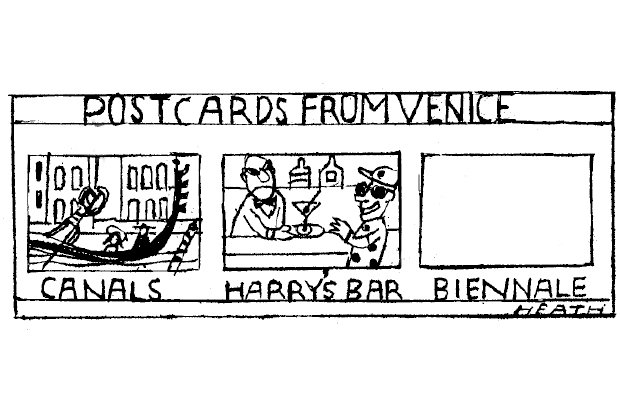Twenty years ago I wrote of the otherwise slaveringly praised Guggenheim Museum in Bilbao:
I’m in a minority of, apparently, one. It strikes me as a consummate gimmick… a fantastically elaborate and rather wearisome joke. Has mankind spent all these centuries perfecting Euclidean geometry and orthogonal engineering in order to have it overthrown by massively expensive crazy cottages clad in titanium? Apparently mankind has.
So much for the building. What of the ‘Bilbao effect’, an epithet that I am accused of having coined (I can’t remember, but it’s inappropriate because there is, typically, no effect). Even before Frank Gehry’s earth-shattering masterpiece was finished, word was out and post-industrial cities on several continents were competing with each other for the favours of a handful of egomaniacal narcissists calling themselves architects to build them a landmark, a regenerative beacon, an iconically iconic icon, a photo-opportunistic sight-bite (that one definitely is mine).
The point of these distended three-dimensional logos was, of course, to ‘rebrand’ the place in question, to give it a visual identity other than that of wrecked warehouses, junky estates and swarf pyramids (which abound in Bilbao’s docks). They were spendthrift, mostly trashy monuments to thoughtless optimism. The profligate process sanctions the construction of an advertisement that is itself the product.
I made a telly film called On The Brandwagon, which ridiculed regeneration as the most bloated, most risibly corrupt of gravy trains, a racket. It goes without saying that no one heeded it, my first and last essay in didacticism.
On the contrary, excitable mayors, development agencies,the heirs of Alderman Jabez Foodbotham, enterprise zones and go-ahead partnering partnerships grew ever more hungry for flashy chunks of architectural bling. They hardly stopped to notice that a century and a half earlier Britain’s burgeoning cities had competed to equip themselves with a town hall grander than the next burgh’s and had usually ended up failing to emulate Cuthbert Brodrick’s sublime achievement in Leeds. Nor did they observe that a town hall has an administrative as well as a ceremonial purpose. The problem with logo architecture should be finding a role, an excuse, for the structure beyond the catchy sight-bite that is supposed to put, say, Barrow or Barry on the map from which the Ordnance Survey had forgetfully omitted them.
That role is almost invariably ‘cultural’. The former director of the Manchester International Festival pronounced, ‘You can never have too much culture.’ Hence The Factory, the scrambled aggregation of computer-generated lumps that the Dutch architectural corporation OMA is about to inflict on that city as some sort of ‘cultural’ centre. Of course it is, for just as architects are stylistic sheep, so are their clients doggedly in thrall to whatever purpose the fashion of the day dictates. The craze for theatres, galleries, museums, performance spaces et al. is based on the presumption that ‘inclusive culture’ is some sort of collective tonic, brain balm — all the more efficacious when dished up in staggeringly expensive new buildings that assuage the vanity of cities and their bosses. (The estimated cost of The Factory — the name shouts about what ‘culture’ means — will no doubt have increased by several hundred thousand pounds since you began reading this article.)
How much longer can this presumption endure unquestioned? In the 20 years since the Guggenheim opened in Bilbao, it has attracted 20 million visitors. Yet unemployment in the agglomeration has increased and with it the number of people on welfare. The economic beneficiaries of ‘regeneration’ are limited to, initially, the construction industry and, subsequently, the tourist trade. There is no more drip down from these projects than there is from supply-side tax breaks. This has at last been acknowledged.
We may come to speak of the Helsinki effect. That glorious city rejected the Guggenheim Museum that was to be foist upon it by, of course, the Guggenheim Foundation, which, astonishingly, would charge $20 million for the use of its precious name and access to its collections while demanding that the Finnish government (the people) pay a third of the building costs. Who do these wretched, entitled panjandrums of the curatocracy think they are?
London’s music establishment has for many years whined that the city’s concert halls are inadequate for what Simon Rattle calls ‘a fifth of the repertoire’: has this frizzy hairdo never heard of bricolage and extemporisation; of making do? Evidently not. The LSO is now to get a new £250-million building on a site that currently houses the Museum of London.
It is not too late to scrap this folly. It is even perhaps not too late to scrap the Manchester project, pay off OMA and use the money for building accommodation or, better, converting mills, warehouses and factories to that end. A moratorium on the construction of art hubs and miles, culture sheds and bothies, might precede a moratorium on building anything other than housing. The actual need for further galleries and so on is non-existent. The other day I selfishly enjoyed the Otto Dix exhibition at the Tate in Liverpool’s former docks (designed by Jesse Hartley, a great engineer, not an architect). I say selfishly because there were no more than a dozen people in the large gallery. The day before I had popped into Tate Modern to do a spot of preparatory comparison with its two works by Christian Schad. London is more populous than Liverpool and the gallery in question was proportionately fuller, but it was still quiet. However, the main hall was far from quiet.
Here was the cheery, embarrassing face of art in 2017, art to make you wince — an already squalid carpet, and various playground climbing bars and swings installed by a trio of Danish thinkers for the kiddies to maim themselves on. We should think hard before subsidising such terminal mediocrity, let alone building garish shelters for it.
Got something to add? Join the discussion and comment below.
Get 10 issues for just $10
Subscribe to The Spectator Australia today for the next 10 magazine issues, plus full online access, for just $10.
You might disagree with half of it, but you’ll enjoy reading all of it. Try your first month for free, then just $2 a week for the remainder of your first year.














Comments
Don't miss out
Join the conversation with other Spectator Australia readers. Subscribe to leave a comment.
SUBSCRIBEAlready a subscriber? Log in